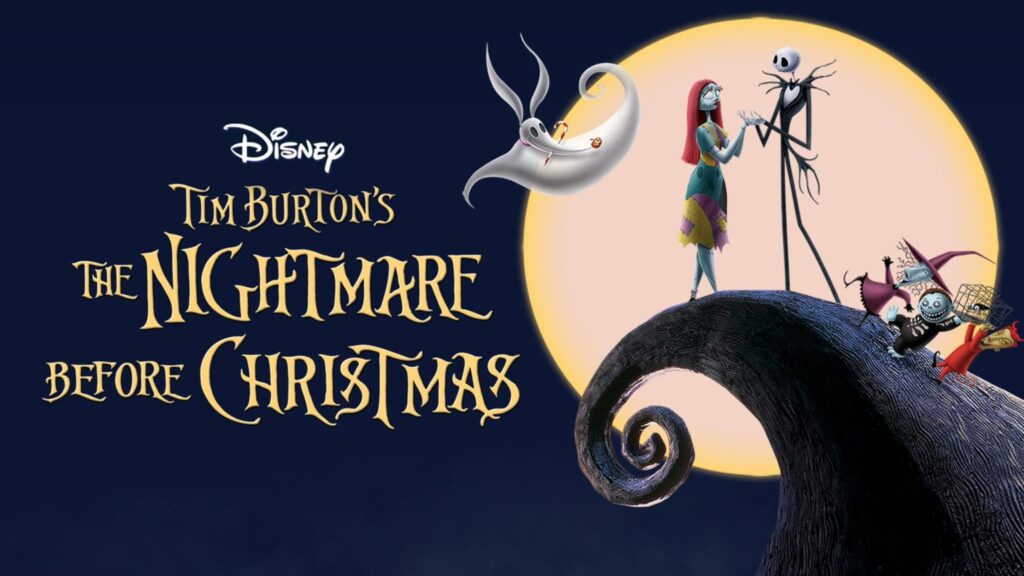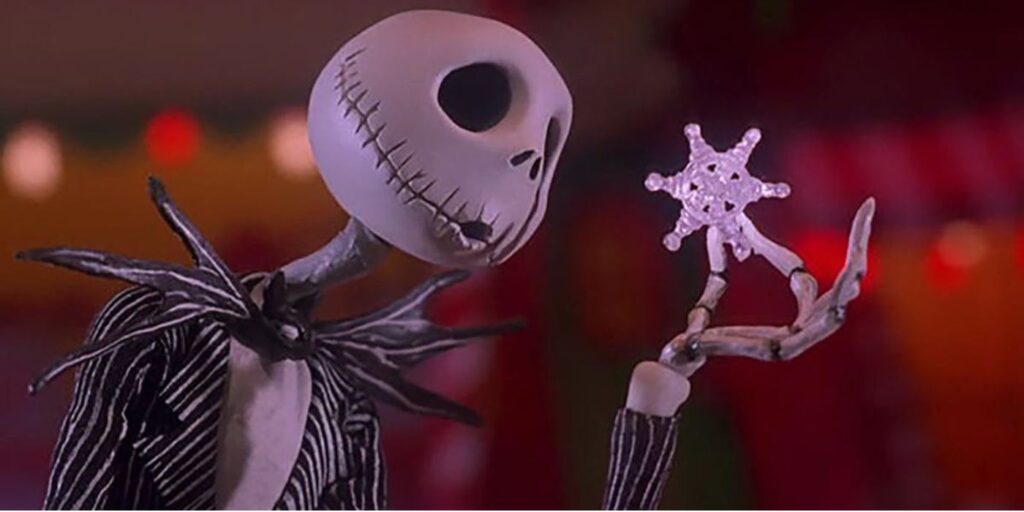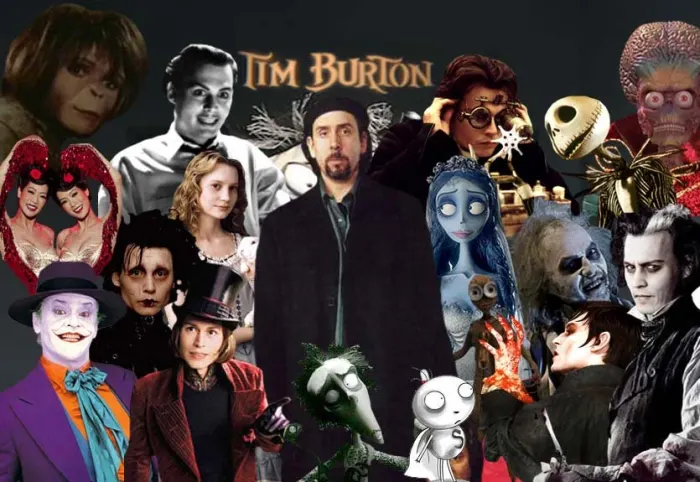By Penny Theodorakopoulou,
Tim Burton. Every cinephile is familiar with that name in numerous great movies. From Charlie and the Chocolate Factory (2005) and Alice in Wonderland (2010) to Edward Scissorhands (1990) and Dumbo (2019), his movies vary quite a bit genre-wise.
He was born on August 25, 1958, in Burbank, California. He is undoubtedly one of the most famous and successful directors, producers, and artists in all of Hollywood history. Mostly known for his partnership — and friendship — with the famous actor, Johnny Depp, as well as his former domestic partner, Helena Bonham Carter, he has worked with many other popular Hollywood celebrities, such as Robin Williams, Christopher Lee, Michael Gough, Jim Carrey, Jack Nicholson, etc.
Apart from the plethora of nominations for most of his movies — 89, to be exact — he has won awards the following awards:
- In 1990, he won the Emmy Award in Beetlejuice, in the category “Outstanding Children’s Animated Program”. During the same year, he also won the Saturn Award in Edward Scissorhands, in the category Best Fantasy Film
- In 1994, he won another Saturn Award in The Nightmare Before Christmas, in the category Best Fantasy Film
- In 2006, a third Saturn Award was added to his collection for his movie Corpse Bride, in the category Best Animated Film
- In 2008, the Golden Globe Award in Sweeney Todd: The Demon Barber of Fleet Street, in the category Best Motion Picture – Musical or Comedy
- In 2013, he won his fourth Saturn Award in Frankenweenie, in the category Best Animated Film.
Other won awards:
- In 2008, he won the National Board of Reviews Award in Sweeney Todd: The Demon Barber of Fleet Street, in the category Best Director
- In 2009, he acquired the Producers Guild of America Award for his movie 9, in the category Best Producer
- In 2010, he won in Inkpot Award the Lacanian Psychoanalysis Prize in Alice in Wonderland.
In total, he has won 18 awards from 1988 to 2010 — and counting.
Due to my unconditional and unmeasured love for Tim Burton and his movies, I will be dedicating my next articles to some of the most notable —at least from my point of view— movies he has either directed, produced, or/and even written. In this article, since Halloween is on its way, I decided to talk about one of Tim Burton’s famous movies and one of my favorites — The Nightmare Before Christmas (1993).

The Nightmare Before Christmas (also known as Tim Burton’s The Nightmare Before Christmas) is an animated stop-motion musical movie; a movie that, the way I see it, you can watch both on Halloween and on Christmas. Tim Burton was the producer and the one who conceived the idea for the movie. After the massive success of Vincent (1982), Burton started considering whether The Nightmare Before Christmas should be a short movie or a 30-minute television special, which was originally a poem written by him. It was not a major success upon initial release but 25 years later, it is considered a cult classic, still celebrated, and watched by millions throughout the holiday season.
The events of the movie take place in a fantasy world called Halloween Town, the king of which is Jack Skellington (voiced by Chris Sarandon when speaking, and Danny Elfman when singing). While the whole Halloween Town is preparing for the annual Halloween celebrations, the “Pumpkin King” Jack is wandering on his own in the woods. Unlike the residents of Halloween Town, Jack has gotten tired of the continuous routine that takes place every year.
Seeking even the most minor change, Jack comes across six trees, one of which represents one big holiday throughout the year. Intrigued by the festive appearance of the door, he decides to enter the Christmas door. There, he is in complete awe by what he is witnessing: everything is jolly, with a plethora of colors around him and happy faces and songs echoing all over the Christmas Town. Wanting to experience this unprecedented holiday, he kidnaps Santa Claus, or “Santy Claws”, as he calls him by mistake, and brings him to Halloween Town. Then, he announces to the citizens of Halloween Town that they will be in charge of Christmas this year.
As we can imagine, no one is familiar with anything related to Christmas, but they all give their best to make it a memorable Christmas — and they achieve that goal, even though you would not consider their Christmas “jolly” or “colorful”, but rather… “deathy”. In the end, Jack realizes the true meaning of Christmas and what it means — being close to the ones you love and cherish and spending valuable time together.
Even though it has been almost three decades since The Nightmare Before Christmas was released, it is still considered a classic and amazing movie. But what makes this particular movie a lasting success? The Touchstone Pictures label was created in the 80s so Disney could release movies targeted to more adult audiences. Unsurprisingly, The Nightmare Before Christmas was released under this label because it was deemed “too scary for regular child audiences”. They might have had a good reason for this, because, although Henry Selick directed the movie, it was produced and designed, as mentioned before, by Tim Burton, known for his eccentric and goth-themed style in animation and movies in general; hence, making the movie “not appropriate” for children.
Nonetheless, the main reason the movie has retained its popularity is likely a combination of four factors: the stop-motion animation, memorable music, Tim Burton’s creepy style juxtaposed with the cheery nature of the Christmas season, and the plot. Let’s elaborate on these three factors:
I. Stop-motion animation: A visual masterpiece
First and foremost, the film is a visual marvel. The more I watch The Nightmare Before Christmas, the more I am struck by how much time and effort must have gone into the stop-motion animation. For a vast range of characters, every single movement and facial expression has to be properly prepared and executed. Part of what I believe makes this film a classic is the incredible payout of that extraordinary level of detail and concentration.
The film’s visual appeal is additionally enhanced by detailed backgrounds. For example, the warm and joyful atmosphere of Christmas Town contrasts sharply with the cold and frightening atmosphere of Halloween Town (however, parents should see the trailer to see if certain features of Halloween Town are too frightening for young children). The directors have done an excellent job of creating a fascinating and immersive movie-watching experience by employing what I consider to be a tough visual approach.

II. Memorable music: The music still hits
Danny Elfman’s excellent score is the second thing that makes The Nightmare Before Christmas a classic. One of the pleasures for me is the music, which ranges from singable tunes like “This Is Halloween” to intriguing background music that wonderfully complements the picture. The score portrays the brilliance of Christmas Town and the darkness of Halloween Town, just as the visual features. Jack Skellington’s singing voice is provided by Elfman himself, and Catherine O’Hara performs “Sally’s Song”. Without the wonderful soundtrack, this film would be unwatchable.
III. Tim Burton’s creepy style: The depiction of Christmas
References
- Tim Burton’s The Nightmare Before Christmas, rogerebert, Available here
- Review: “The Nightmare Before Christmas” Embodies the Holiday Spirit, pepperdine-graphic, Available here
- Tim Burton, wikipedia, Available here




